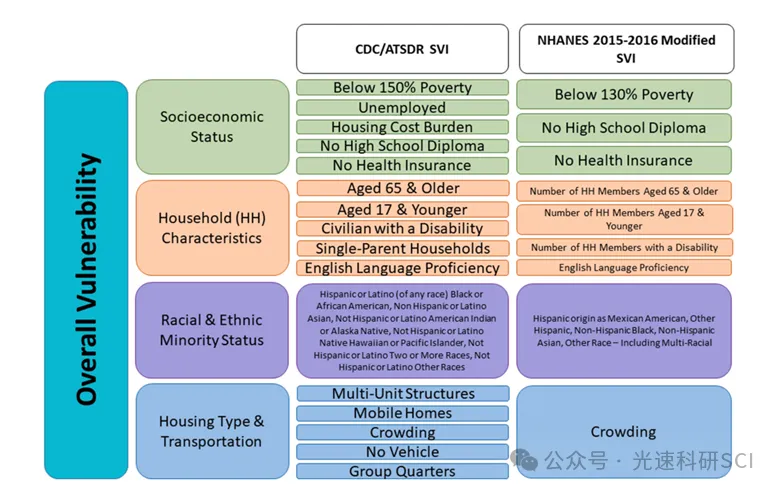
Nhanes新指标:social vulnerability

文章题目:Clustering by chemicals: A novel examination of chemical pollutants and social vulnerability in children and adolescents
DOI:10.1016/j.envres.2024.118456
中文标题:化学品聚类:对儿童和青少年的化学污染物和社会脆弱性进行新的研究
发表杂志:Environ Res
影响因子:1区,IF=8.3
发表时间:2024年2月
今天给大家分享一篇在2024年2月发表在《Environ Res》(1区,IF=8.3)的文章。本文这项研究利用了2015–2016年美国国家健康与营养调查(NHANES)的数据,探索了6至19岁儿童及青少年中的空气污染物聚类模式,并检验了社会脆弱性与化学暴露群组之间的关联。
暴露:通过尿液测量的34种空气污染物暴露化学物质,包括挥发性有机化合物(VOCs)、多氯联苯(PCBs)、邻苯二甲酸酯代谢产物和持久性有机污染物(POPs)。
结局:研究的结局是社会脆弱性指数(Social Vulnerability Index, SVI)与高化学暴露组的关联。
主要结果:
Fig1

Fig2

Fig3

Fig4

Table1

Table2

Table3

结论:本研究指出,通过NHANES的环境子样本进行的无监督聚类提供了一个创新的多污染物模型,可以用来探索儿童和青少年中的暴露模式。使用修改后的社会脆弱性指数(SVI)有助于识别可能对空气污染高度敏感的儿童。研究强调了在解释研究结果时,需要考虑历史结构性和歧视性不平等,以开发出有益和可持续的解决方案。
环境相关的文章通常都能发不错的分~大家感兴趣可以看看哦~也可以看看social vulnerability指标和自己所研究疾病是否相关~课题思路这不就来了么?万层高楼平底起,一起加油呀!